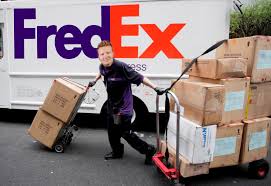Shareholders are less giddy. As one of the biggest parcel carriers in America, FedEx ought to benefit from uninterrupted GDP growth. Yet since 2009, when America began its longest economic expansion on record, the company has underperformed the S&P 500 by almost 100 percentage points. This year it has suffered from the Sino-American trade war, growing competition from Amazon and problems integrating Europe’s TNT Express, which it bought in 2016 for $4.4bn. Such squalls are not good for its financial health, yet FedEx has been investing more than $5bn a year since 2017 to keep deep-pocketed rivals like Amazon and the e-commerce giant’s Chinese counterpart, Alibaba, out of its delivery business. This is a game of chance that Mr Smith is not guaranteed to win.

The biggest stakes are at home. FedEx built its name as a highend business-to-business firm, offering guaranteed time slots for delivering parcels and factory goods along the supply chain. But ecommerce is raising the importance of delivery to homes, at faster speeds and lower costs. FedEx has responded by expanding its trucking service, which will soon reach most American homes seven days a week. But that clobbers margins. Meanwhile, Amazon is spending heavily on same-day delivery. It is also building an aircraft fleet that, though still a midget compared with FedEx’s, will amount to 70 aircraft by 2021. According to Satish Jindel, a logistics consultant, Amazon has leapfrogged its rivals to become the biggest firm in the world at organising warehousing and transport for other companies’ goods (as well as its own). Only a few years ago Mr Smith mocked the idea of competition from the likes of Amazon as “fantastical”. But in the past two months FedEx has severed its (albeit tiny) remaining ties with Amazon to focus on building its relationship with retailers like Walmart and Target instead. Its main rival, UPS, is sticking with Amazon. This sets the stage for a potentially bruising price war that could further crimp profits.
译文由可可原创,仅供学习交流使用,未经许可请勿转载。











